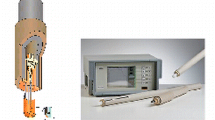Abstract
The industrial aluminum reduction cell is an electrochemistry reactor that operates under high temperatures and highly corrosive conditions. However, these conditions have restricted the measurement of key control parameters, making the control of aluminum reduction cells a difficult problem in the industry. Because aluminum electrolysis control systems have a significant economic influence, substantial research has been conducted on control algorithms, control systems and information systems for aluminum reduction cells. This article first summarizes the development of control systems and then focuses on the progress made since 2000, including alumina concentration control, temperature control and electrolyte molecular ratio control, fault diagnosis, cell condition prediction and control system expansion. Based on these studies, the concept of a smart aluminum electrolysis plant is proposed. The frame construction, key problems and current progress are introduced. Finally, several future directions are discussed.





Similar content being viewed by others
References
J. Thonstad, P. Fellner, G.M. Haarberg, J. Híveš, H. Kvande, and A. Sterten, Aluminum Electrolysis, 3rd ed. (Düsseldorf: Aluminium-Verlag Marketing & Kommunikation GmbH, 2001).
L. Yexiang and L. Jie, Modern Aluminum Electrolysis, 1st ed. (Beijing: Metallurgical Indstry Press, 2008).
Q. Zhuxian, Aluminum Manufacturing in Prebake Reduction Cell, 3rd ed. (Beijing: Metallurgical Indstry Press, 2005).
R.A. Mohr, Light Metals, ed. J.E. Andersen (Warrendale: TMS, 1982), pp. 595–608.
Y. Macaudiere, Light Metals, ed. L.G. Boxall (Warrendale: TMS, 1988), pp. 607–612.
C.M. Ritter, L.F.R. Neves, L.V.M. Ivo, and H.H.S. Trigueiro, Light Metals, ed. R.D. Peterson (Warrendale: TMS, 2000), pp. 271–276.
T. Moen, J. Aalbu, and P. Borg, Light Metals, ed. H.O. Bohner (Warrendale: TMS, 1985), pp. 459–469.
P. Borg, T. Moen, and J. Aalbu, Model. Identif. Control 7, 45 (1986).
J.S. McKenna, F.K. Omani, and T. Nyadziehe, JOM 45, 44 (1993).
J.G. Balchen, MIC 13, 41 (1992).
T. Drengstig, D. Ljungquist, and B.A. Foss, IEEE Trans. Control Syst. 6, 157 (1998).
J. Li, Y.Z. Huang, H.Z. Wang, and Y.X. Liu, Light Metals, ed. U. Mannweiler (Warrendale: TMS, 1994), pp. 441–447.
J. Li, Y.X. Liu, Y.Z. Huang, H.Z. Wang, N. Han, and X.R. Yang, Trans. Nonferrous Met. Soc. 4, 26 (1994).
P. Borg, T. Moen, and J. Aalbu, MIC 7, 45 (1986).
A. Meghlaoui and N. Aljabri, Light Metals, ed. P.N. Crepeau (Warrendale: TMS, 2003), pp. 425–429.
F. Frost and V. Karri, AISTA, ed. M. Mohammadian (Canberra: IOS Press, 2000), pp. 34–39.
F. Frost and V. Karri, IEA/AIE, ed. R. Loganantharaj, G. Palm, and M. Ali (New Orleans: Springer, 2000), pp. 73–78.
L. Tikasz, R.T. Bui, and V. Potocnik, Light Metals, ed. M.B. Christian (Warrendale: TMS, 1990), pp. 197–202.
W.K. Rolland, A. Steinsnes, and A.S. Larsen, Light Metals, ed. E. Rooy (Warrendale: TMS, 1991), pp. 437–443.
L. Tikasz, M. Zaymus, and A. Cseh, Light Metals, ed. L.G. Boxall (Warrendale: TMS, 1988), pp. 583–588.
J. Li, Y.X. Liu, and Y.Z. Huang, Chin. J. Nonferrous Met. 3, 25 (1993).
K.D. Boadu and F.K. Omani, JOM 62, 32 (2010).
B. Sulmont, S. Fardeau, E. Barrioz, and P. Marcellin, Light Metals, ed. T.J. Galloway (San Antonio: TMS, 2006), pp. 325–329.
C. Braga, N.F. Nagem, A. Silva, S. Martin, C.E. Ritter, and M. Verlihay, Light Metals, ed. M. Sorlie (Carlotte: TMS, 2007), pp. 417–422.
M.P. Taylor, Mater. Manuf. Processes 22, 947 (2007).
M.M. Hyland, E.C. Patterson, M.F. Stevens, and B.J. Welch, Scand. J. Metall. 30, 404 (2001).
Y.B. Huang, X.D. Qu, and J.M. Zhou, Trans. Nonferrous Met. Soc. China 19, 724 (2009).
S. Kolås, JOM 59, 55 (2007).
S. Kolås and T. Støre, Control Eng. Pract. 17, 1035 (2009).
T. Drengstig, D. Ljungquist, and B.A. Foss, MIC 19, 31 (1998).
W. Haupin, Light Metals, ed. B. Welch (San Antonio: TMS, 1998), pp. 531–537.
P.M. Entner and G.A. Gudmundsson, Light Metals, ed. W. Hale (Anaheim: TMS, 1996), pp. 445–449.
Y.B. Huang, J. Zhou, X. Qu, and Z. Sun, Control Conference (27th, China, 2008), pp. 99–103 (2008).
X.R. Yang, Y.H. Liu, and J. Cent, South Univ. Technol. 34, 551 (2003).
Y.X. Liu, X.T. Chen, W.G. Zhang, Z. Zou, and J. Li, Com. Eng. Appl. 40, 216 (2004).
N.A.A. Majid, B.R. Young, M.P. Taylor, and J.J. Chen, Light Metals, ed. G. Bearne (San Francisco: TMS, 2009), pp. 589–593.
M.A. Stam, M.P. Taylor, J.J.J. Chen, A. Mulder, and R. Rodrigo, Light Metal, ed. G. Bearne (San Francisco: TMS, 2009), pp. 311–315.
C.E.S. Neto, L.V.M. Ivo, and O.M. Guzzon, Light Metals, ed. H. Kvande (San Francisco: TMS, 2005), pp. 399–405.
S.X. Liu, DMI:Review. 27, 52 (2016).
B.E.I. Jihong and W.A.N.G. Zuojun, Can. Soc. Sci. 11, 13 (2015).
Acknowledgements
This study was supported by the National Science Foundation of China (51574289, 61533020 and 51674300) and the Project of Innovation-driven Plan of Central South University (2015CXS017).
Author information
Authors and Affiliations
Corresponding author
Rights and permissions
About this article
Cite this article
Zhang, H., Li, T., Li, J. et al. Progress in Aluminum Electrolysis Control and Future Direction for Smart Aluminum Electrolysis Plant. JOM 69, 292–300 (2017). https://doi.org/10.1007/s11837-016-2150-4
Received:
Accepted:
Published:
Issue Date:
DOI: https://doi.org/10.1007/s11837-016-2150-4




